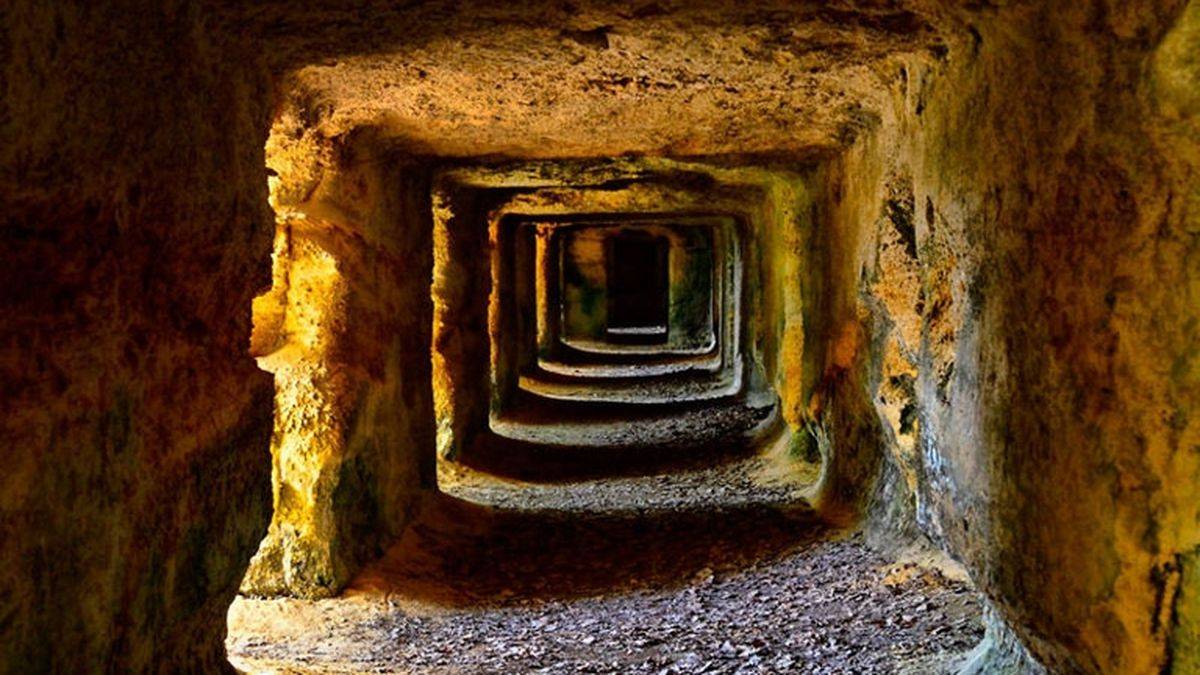 The caves | ©April Anderson / CC-BY-SA
The caves | ©April Anderson / CC-BY-SAAn esoteric maze?
A mystery
Those caves are located in a big wine-producing estate (Saint-Emilion), in the castle of Ferrand.
But what do we have here, exactly? Caves? A stony maze, pretty esoteric? A mystery…
Elie de Betoulaud, the castle's owner, created them in the 17th century (1631-1709).
Elie was a lawyer in Bordeaux and also a poet: he nicknamed himself Damon…
Elie created the cave
He lived in the familial castle of Ferrand when he was not in Paris or Bordeaux. One day, he decided to create something special, here… caves, for instance!
At that time, people red lots of books full of bucolic stuffs, like L’Astrée (written by Honoré d’Urfé in his castle of La Bastie, do you remember?) and they were fond of artificial grotto.
And here, we had prehistorical caves everywhere, with soft stone, easy to sculpt!
Elie didn’t dig those caves from nothing: a troglodyte site existed since ages, here. He only modeled them according to his desires.
He even dedicated a part of the maze to king Louis XIV: besides, in his will, the poet talked about it ″like an eternal monument dedicated to the glory of Louis the Great″!
Let’s follow Damon for the visit!
Shells, coral and Roman gods
Today, we have few remains of those caves.
But fortunately, Damon described them in his book Description des grottes ou du labyrinthe de Damon: come on, let’s go!
We had a first cave, then a terrace with two verdure studies full of orange-trees.
Below, a big water pond with rocks and ivy.
Then, we had galleries here and there of the second cave, full of niches with Roman gods busts inside, framed by orange-trees and shells.
In those galleries opened an arcade which led to a room with a bed, with vases full of ″bouquets made of shells mix with coral branches″.
Oleanders in winter
Further, there was a study ″decorated with Oriental snails, striped shells and vases made of marble, alabaster, nacre, crystal and porcelain.″
Then, a ″lyrical cave″ with seats, orange-trees and Spanish jasmine: we were here like in hothouses, so nice in winter!
After that, here was the long and famous gallery, looking like a cloister, opened on the Dordogne’s valley: in summer, people were in a cool place and in winter, they had a stroll between two ranks or orange-trees, jasmines and oleanders.
The poet finally said: ″It needed lot of work, money and time to create such a gorgeous work, in a rock which was sometimes as hard as iron...″
Nature always reasserts itself
When the French Revolution arrived, Elie’s grand-grand nephew lived in the estate.
But he had to emigrate and abandoned the place.
Roman busts and nacre finally damaged… in few decades, everything almost disappeared.
The visit of the caves
We can visit the caves, by following a waymarked path.
We discover the maze and especially the gallery overlooking the valley, on the cliff-side: 40 metres long and 2 metres high!
